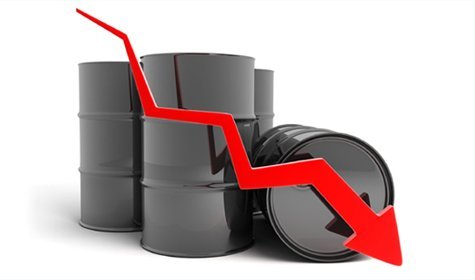Another year is under way, and we are in the midst of yet another central bank-induced credit bubble. This time, the culprit is shaping up to be the oil and gas industry. Hydraulic fracturing, or “fracking,” has seen a marked rise in usage in the United States over the last six years. It represented a new and innovative way to extract hydrocarbons from rock formations deep underground. Many may be tempted to say that the emergence of fracking, as well as the jobs it has created, is further evidence of the free market at work. However, as David Stockman makes clear in this excellent article, the fracking bubble would never have materialized if not for artificially low interest rates instituted by the Federal Reserve in the advent of the 2007–2009 financial crisis.
Oil and natural gas exploration and extraction via hydraulic fracturing is a highly capital-intensive venture. Given that the shelf life of a typical oil well is only two years, these firms need to establish new ones as maintaining existing wells proves too expensive. If not for the six years of Zero Interest Rate Policy (ZIRP) and several rounds of Quantitative Easing (QE) from the Federal Reserve, many of these upstart wildcatting firms would not be able to sustain the cost of exploration and extraction. Having record low borrowing costs has led to massive increases in production, and an influx of new jobs in the field due to economies of scale. In fact, a large percentage of the job gains we have seen since 2008 have been in the fracking industry.
The situation bears strong similarities to the inflating of the housing bubble from 2002–2007. Overproduction due to expectations of increasing demand because of the false impression of a strong economy, a large spike in job growth in the sector that will surely reverse as the bubble bursts, and companies (oil and gas wildcatters in place of homebuilders) issuing large sums of debt to fund their seemingly profitable ventures. However, just as in the case with the housing bubble, this boom was not induced by market fundamentals and an increased demand to feed this increase in supply. Firms, able to see energy as an indispensable sector just as housing, began directing their resources there and had no reason to believe oil prices would crash (sound familiar?).
Now companies and media outlets are scrambling to discover what the break-even oil prices are, because as the price continues to fall so does the collateral underpinning the large sums of bank debt. It is also worth mentioning that these oil and gas companies comprise approximately 17 percent of the overall high-yield debt market. This is a debt market for businesses with shorter track records of debt service and lower credit ratings, and offers slightly higher interest rates than standard investment-grade corporate bond markets in order to compensate the investor for heightened risk of default. A wave of defaults from these fracking companies would lead to ripples in the overall high-yield debt market, contributing to a market sell-off in the asset class that drives bond prices down sharply and inversely raises borrowing costs for other firms in the junk bond space.
Mark Abdelnour is a recent graduate of the University of Delaware where he studied economics, and he is currently working in fixed-income valuation at a major bank in New York.

